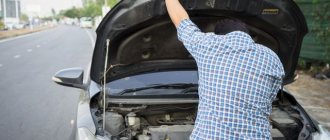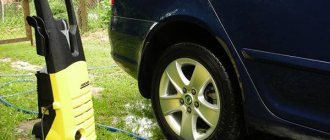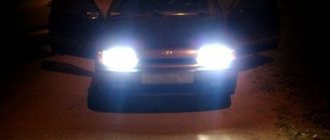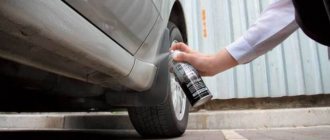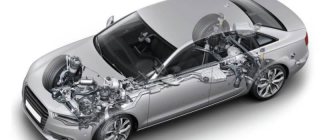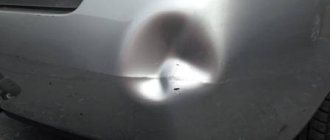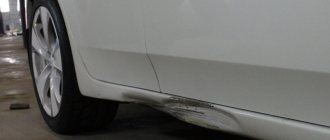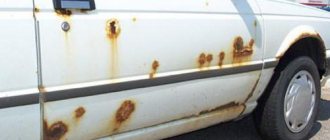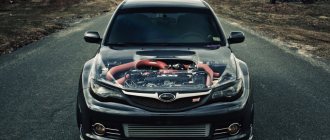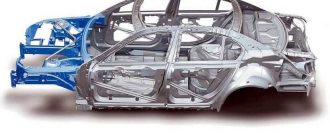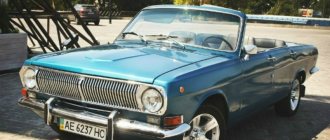X-Shin.ru - here you can buy winter studded tires at low prices.
. Look for where to buy summer tires inexpensively - at X-Shin.ru. . Tires and Rims in stock and on order. Official dealer. PIN-AUTO. At any time of the year, the car is exposed to pollution. And if car owners periodically wash the top of the car, the bottom of the car almost always remains unattended. This cannot be allowed. Any car, even the most galvanized and sealed one, needs to have its underbody washed, otherwise it will rot. Dirt that easily sticks to the bottom contains chemical compounds such as deicing agents and salt. In Europe, the reagents are not dangerous for cars, but on the contrary, when evaporated, they form an anti-corrosion film.
In Russia and Ukraine, deicing agents are very caustic and dangerous for cars. They quickly eat into the metal, resulting in pockets of corrosion on the bottom, thresholds and doors. Many car owners practically do not wash the underbody of the car, and then they are surprised that the car does not seem to be old, it is a brand name, but everything rots early. There is no car that does not require maintenance. In this article we will tell you what methods and means to wash, and what washing the underbody of a car should be like.
How to wash the underbody of a car with your own hands
The lower part of the car is the most vulnerable. It is recommended to carry out hygiene procedures at least once a year. Otherwise, after a couple of years of active use of the vehicle, the first “saffron milk caps” will appear and the metal will begin to corrode. This is extremely dangerous not only for the structure of the car, but the suspension also suffers.
Do I need to wash the bottom?
Many car enthusiasts send their cars to the car wash every week or more often. This has become easy thanks to the proliferation of self-service services, where you can get your car in good shape for little money.
Unfortunately, in such establishments there is no lift on which to really assess the condition of the bottom of the car and, if necessary, wash it. It’s not easy to do this with your own hands, but you can do it if you want.
Preparatory work and washing
First, inspect the surface for rust and damage. Fat deposits and dirt are also removed immediately before washing. This should be done using a stiff metal brush. The bottom surface is cleaned and then degreased with white spirit.
Carry out inspection and preliminary preparation carefully, without missing any contamination. Otherwise, corrosion will continue to “eat” the metal even after washing.
Next, standard surface cleaning is carried out using a high-pressure water supply device. Portable tools are now sold in any electrical goods store. Be sure to wash all hard-to-reach places: this is where more dirt accumulates and rust forms faster.
Application of anti-corrosion protection
After washing, you need to let the surface dry, and then provide the bottom with a high-quality coating. The first is a rust converter. This product is distributed in the most vulnerable places. It turns the metal coating layer into an inactive compound and prevents the formation of spiders.
Use Coca-Cola to clean your windshield
When it rains after a long dry spell, a dirty windshield becomes one big mess due to the dirt being partially baked into the surface of the glass.
As a result, neither rain nor windshield wipers help clean the surface. As a rule, the windshield in this case will look like dirt spots. If such spots begin to bother you right on the road, there is a temporary solution to this problem. See also: 37 Unusual Ways to Use Coca-Cola
Take an old towel, a large rag, and place it at the bottom of the windshield to protect the paint on your car's hood. Next, take Coca-Cola and pour it on the windshield. Gas bubbles will quickly erase dirt on the glass. However, keep in mind that after such treatment the glass will become sticky, which will attract new dirt.
Therefore, after treating with Coca-Cola, it is necessary to rinse the glass with water. Despite some inconveniences associated with using a sugary drink, this hack works great as a temporary solution to poor visibility due to dirt stuck to the windshield.
How to wash the underbody of a car? Reliable methods
At any time of the year, the car is exposed to pollution. And if car owners periodically wash the top of the car, the bottom of the car almost always remains unattended. This cannot be allowed. Any car, even the most galvanized and sealed one, needs to have its underbody washed, otherwise it will rot. Dirt that easily sticks to the bottom contains chemical compounds such as deicing agents and salt. In Europe, the reagents are not dangerous for cars, but on the contrary, when evaporated, they form an anti-corrosion film.
In Russia and Ukraine, deicing agents are very caustic and dangerous for cars. They quickly eat into the metal, resulting in pockets of corrosion on the bottom, thresholds and doors. Many car owners practically do not wash the underbody of the car, and then they are surprised that the car does not seem to be old, it is a brand name, but everything rots early. There is no car that does not require maintenance. In this article we will tell you what methods and means to wash, and what washing the underbody of a car should be like.
Where can I wash the underbody of my car?
Almost any car wash provides this service. Prices are approximately the same everywhere, differences depending on the region. The conditions and quality of underbody washing are different everywhere. It’s better to go to a car wash, where it’s a little more expensive, but they’ll do everything better. Choosing a car wash is not an easy process. In one place they seem to wash the body well, but the interior and underbody are disgusting; at another car wash everything may turn out to be the opposite. It happens that the service is good in all directions, but the services are usually more expensive.
Cannon fat
Separately, it is worth noting the so-called “cannon fat”. This protective composition is a thickened oil containing anti-corrosion additives, designed specifically to protect the vehicle's metal from oxidation. Solid “cannon fat”, which is used for the bottom, contains a lot of paraffin. Soft is used for processing inside cavities. This product has proven itself to be a good anticorrosive agent. It adheres well to the surface and is not washed off with water. However, “cannon fat” does not provide mechanical protection and requires periodic renewal.
How do you wash the underbody at a car wash?
The car is driven into the pit, the washer puts on a special waterproof suit and a special helmet that resembles a spacesuit. Then, in this equipment, he goes down into the hole under the car and washes the bottom with a high-pressure washer.
There is another interesting method. The washer pushes a small “cart” on wheels, special for washing the underbody, under the car. Next, he turns on the water supply on a long handle and the device washes the bottom of the car from bottom to top with high water pressure. And the washer freely moves the device under the bottom. The sink has several nozzles with variable jet direction.
The car is lifted on a lift and the car washer works with a high-pressure washer manually. This method is more convenient and reliable. The washer has an overview of almost all elements of the bottom and can wash even in hard-to-reach places. For an additional fee, they will even remove the wheels and wash them separately on all sides. This makes washing wheel arches and mechanisms even better. In addition, you will be able to evaluate the work yourself, since everything is very clearly visible on the lift.
Automatic car underbody washing. This service is available only at specialized car washes. Here everything happens without human participation. The car enters the box, where it crosses a special line. At this moment, the photocells are activated and send a signal to the water nozzles. Many nozzles supply water under pressure in different directions. In this way, the bottom, wheels and arches are automatically washed. This system resembles a fountain system. The water flows through the grates into the tank, where it goes through purification stages and is again supplied to the nozzles.
Basic principles
The principle of such a wash is simple and no different from car body washing. First, car wash foam is applied to the underbody, wheels and arches. It is, of course, advisable to first knock off the dirt with water pressure, but this is not necessary; you can apply foam right away.
Washing the bottom yourself is not recommended. Firstly, it is extremely inconvenient. You need to jack up the car and crawl under the bottom. Dirt will flow down your hands and drip onto your head. Such a wash will not be of high quality. Secondly, you will rub the bottom with rags or sponges, which can damage possible tubes or wires. In addition, with physical contact there is a greater chance of damaging anti-corrosion protective coatings than with high water pressure. And you can’t wash off dirt everywhere with a rag. Hard to reach areas will remain dirty. If you have a high-pressure washer, you can purchase special attachments for washing the bottom and safely wash it yourself.
If the underbody is washed with a special device on wheels, which is driven under the car, which we described above, then here things are simpler. First, a nozzle in the form of a container with liquid is attached to the device, which, when interacting with water, forms foam. Then, after 10-15 minutes, the washer washes off the foam with clean water without foam, driving the same washing apparatus under the car.
After all contaminants have been washed, the bottom must be dried. At car washes this is done with a stream of warm air.
In conclusion, I would like to note a few important details. There is no need to wash the underbody of the car too often or unnecessarily. Be sure to do this after every winter, since in winter salt and reagents are especially active and there is a lot of them. If you often find yourself in sticky mud, for example, if you got stuck while fishing, sat on the bottom, or skidded, then it is advisable to go to a car wash and be sure to wash the bottom along with the body.
And one more thing - after each wash of the bottom, anti-corrosion treatment or galvanization is necessary. The foam used in car washes is very active. Chemicals can be very caustic and, together with dirt, will corrode protective coatings and galvanizing. And the washer may not be experienced and use strong water pressure to remove the anti-corrosion protection from the bottom. In addition, our roads are not ideal: either a stone from under the wheels hits the bottom, or a bump gets caught. All this leaves scratches. Therefore, if after each wash of the bottom you treat it with protective coatings, this will be a big plus.
Some protective coatings also have water and dirt repellent properties. When treating the underbody with protective coatings, special attention should be paid to seams, ball joints, sills and wheel arches. With such care, the service life of your car body will increase significantly.
Source
Protecting the car body from water without wax
Add 1 cup of kerosene to a 3-liter bucket filled with water. Attention! If using less water, be sure to reduce the amount of kerosene to avoid damaging the paintwork. Then apply the solution to the car. Now you won't need to apply expensive wax to your car. The resulting solution perfectly replaces wax. So, by treating your car with the resulting solution, the next time it rains, the rainwater will roll off the body faster, reducing the likelihood of rust.
Preparatory work
Anti-corrosion treatment of the bottom, as well as the inner sides of the wings, begins with the removal of used damaged coating, pockets of rust and corrosion, dirt and grease deposits. Proper adhesion of anti-corrosion mastic to body elements is only possible on a well-cleaned and degreased surface.
Old peeling treatment can be removed with a metal brush and scraper. They also remove loose layers of rust. After this rough treatment, the body elements should be cleaned with sandpaper and degreased with white spirit.
Next, the cleaned and degreased surface is processed...
a rust converter that turns the top layer of metal into a chemically inactive compound. It is advisable to use a high-speed converter.
Now you can treat with anti-corrosion mastic or paste; the possibility of using one or another tool - a brush or just a mitten worn on the hand - depends on its viscosity. The treatment should be carried out so that the anticorrosion layer has approximately the same thickness, without large sagging or missing areas of treatment.
For do-it-yourself anti-corrosion treatment, bitumen-based mastics are best suited. They have proven themselves to withstand the effects of water and salts, but are not very resistant to sand and road gravel.
In severe frosts, bitumen mastic becomes brittle and can crack or even fall off from impacts.
Most susceptible to corrosion...
Hidden cavities, which are almost impossible to clean well, are treated with a liquid anti-corrosion preparation such as Movil or Resistin. The use of these materials is allowed even on surfaces damaged by corrosion or previously coated with oil.
The cunning dealer timidly hides...
In order not to be unfounded, we will quote excerpts from the warranty statements of well-known automakers.
Hyundai. “The manufacturer’s warranty does not apply to the following cases: defects of the car or its individual elements caused by external influences (including, but not limited to): industrial, construction and chemical emissions, acid or alkaline air pollution, acid rain, plant sap, waste products of birds and animals, deicing agents, parts of the road surface such as stones, sand, salt, etc.”
Honda. “Complaints will not be accepted for defects arising due to adverse environmental influences for which Honda has not undertaken any obligations to protect (aggressive precipitation, excessive levels of dust and aggressive chemicals in the air, bird droppings, maritime climate with high humidity air, the use of salt compositions for maintaining roads in winter, other chemically aggressive substances, etc.)"
Mitsubishi. “...The Mitsubishi Motors warranty is limited only to manufacturing defects and does not apply to the following work, parts, materials and circumstances: damage to the vehicle caused by external influences (chemicals, acid rain, tree sap, waste products of birds and animals, de-icing chemicals, parts road surface: stones, sand, etc.)"
In a word, the cunning dealer relieves himself of all responsibility for, in general, ordinary operation. Let's not discuss the moral side of the matter. Let's limit ourselves to a practical conclusion: driver, help yourself. Or better yet: service technician, help the driver!
Movili for the bottom
To prevent the occurrence of rust on the car body, before covering it with high-quality paint, it is recommended to apply Movil. Most car owners call any type of anticorrosive agent Movil, but this is absolutely false. Movil contains elements that prevent corrosion, these are:
To determine which Movil is needed, you should find out the type of corrosion. They exist in three subspecies:
When Movil is purchased, you need to carefully prepare problem areas outside and inside the underbody, which you will have to clean, seal and coat with anti-corrosive.
see also
Anti-gravel treatment
- 41 0 36k
The best wax for a car
- 40 0 41k
Which sound insulation for a car should you choose?
- 47 0 47k
Anti-scratch for cars
- 8 0 15k
Body polish
- 85 5 115k
In theory, processing of the underbody should take place at the factory, during the manufacture of the car. There, mastic and protective compounds are applied to it in hidden holes. But there are sad exceptions, and over time, anti-corrosion protection loses its properties. Therefore, over time, you will still have to think about how to treat the underbody of the car.
Device for applying liquid anticorrosive
The problem faced by car enthusiasts who decide to process hidden cavities on their own is the lack of necessary equipment. They can use a relatively simple device that operates on the principle of air spraying of drugs under a pressure of 4-6 kg/cm2.
The simplest design of such a device is as follows: a nozzle for it can be made from a cologne spray bottle by drilling out the nozzle in its tip to a diameter of 1.2 mm. A brass tube must be soldered to the inner wall, through which the anti-corrosion agent will be supplied.
The pump is connected with a hose to the spray tube going to the container with Movil. To supply the drug to the tube, you can use a polyvinyl chloride tube lowered into the vessel. For greater clarity, a diagram of such a device is shown below.
With the constant creation of air pressure by the pump, the torch emerging from the Movil nozzle is ensured within 14-20 cm, which is enough to apply it inside hidden cavities.
Before applying Movil to hidden surfaces of cavities, it is necessary to ensure that the sprayer has access to the required areas. For this:
If possible, accessible treatment areas should be washed with water, blown with air and dried. In garage conditions, where it is impossible to carry out effective drying, it is enough to limit yourself to wiping them with a damp cloth, followed by natural drying. Considering that the largest number of points requiring treatment are located in the bottom area, it is advisable to carry out all work on a lift or overpass.
To process the sills, the place of the spare tire and the cross member of the front part, you need to pull out the plugs. Two plugs are installed on both sides under the front fenders, a plug on both sides in the rear arches, in the center in the spare tire niche, and one on both sides in the cross member under the front seats. The drainage holes also need to be cleaned.
Before anti-corrosion treatment of thresholds, arches, and bottoms is carried out, they should first be washed with ordinary water and blown with a compressor (this will dry them out faster). It is advisable to dismantle the wheels so as not to complicate the process, and place the car on reliable supports. Cover wheel rims, brake mechanisms, and transmission elements with something to prevent anticorrosion. After this, open all doors, lids and begin application.
Making your own car lift
To wash or perform various repair work, the car owner may need a lift, which can be made independently.
To make a mechanical lift that will be installed in the garage, you will need the following parts:
It is also useful to read: Effective means for washing a car engine without rinsing with water
Lift assembly:
This way you can easily make a simple car lift yourself, which can be used in the garage for washing the underbody and performing various repair work.
Processing 2121 "Niva"
On a VAZ-21 Niva car, the procedure for performing preparation and application of anti-corrosion material is somewhat different. First, the following are removed from the car: the radiator grille, headlights with rims, upholstery and rear wing flaps, caps for all rear cross members.
Internal surfaces are washed with running water until water comes out of them without impurities. After this, mandatory drying is carried out with air blowing. Anticorrosive agent is applied to the Niva body elements in the following order:
Places for applying anti-corrosion material on the surfaces of parts and in hidden sections of the VAZ 2121 Niva body
Attachments for Karcher mini-washers - maximum possibilities!
Karcher mini-washers are high-quality and functional equipment. It allows you to effectively wash away all kinds of contaminants, take care of vehicles, garden tools, and landscape elements. However, there is a way to further increase the functionality of washing equipment - use the attachments offered by the manufacturer. Each of them is designed to perform a highly specialized function, to improve and facilitate the user’s work.
Some nozzles are supplied complete with sinks, while some need to be ordered separately. Let's look at the most popular and sought-after devices for miniwashes from the famous German brand.
Brush for washing rims
Anticorrosive recipes
In order to save money and get a better quality product, you can prepare the product yourself.
Recipe No. 1
All components are mixed, after which the underbody anticorrosive is ready. Next, it is heated and applied to the damaged areas in 2 stages.
Recipe No. 2
All components are added one piece at a time. The result is a composition that becomes like wax in the cold, and like a flowing liquid in the heat.
Recipe No. 3
To prepare it, take in equal parts:
Processing of models 2105, 2107
The following cavities are treated with anticorrosive agents first:
For more affordable shown in the picture
Places where anti-corrosion material is applied to the surfaces of parts and hidden sections of the body of VAZ-2105 and 2107 cars
After the anti-corrosion treatment of the car with your own hands is completed, you need to remove traces of mastic using a swab moistened with white spirit or kerosene, then replace the previously removed parts, including plugs, plugs, covers, etc.
This article indicates only the key points in the anti-corrosion treatment of VAZ bodies. In the process, each of the models may have its own specific nuances. But in general, any car enthusiast can perform such body treatment.
Improve your visibility while driving
Another tip for keeping your car windows clean and clear. To do this, prepare the same liquid that we advised to use for cleaning windshield wiper blades. Add 1/4 cup household ammonia to 1 liter of water in a plastic bottle with a waterproof cap and keep it in your car to clean windshields and windows.
As soon as your windshield or side windows start to get dirty, pour the solution onto a sponge and then apply the liquid to the windows. Then dry the glass with a soft cloth or paper towel.
